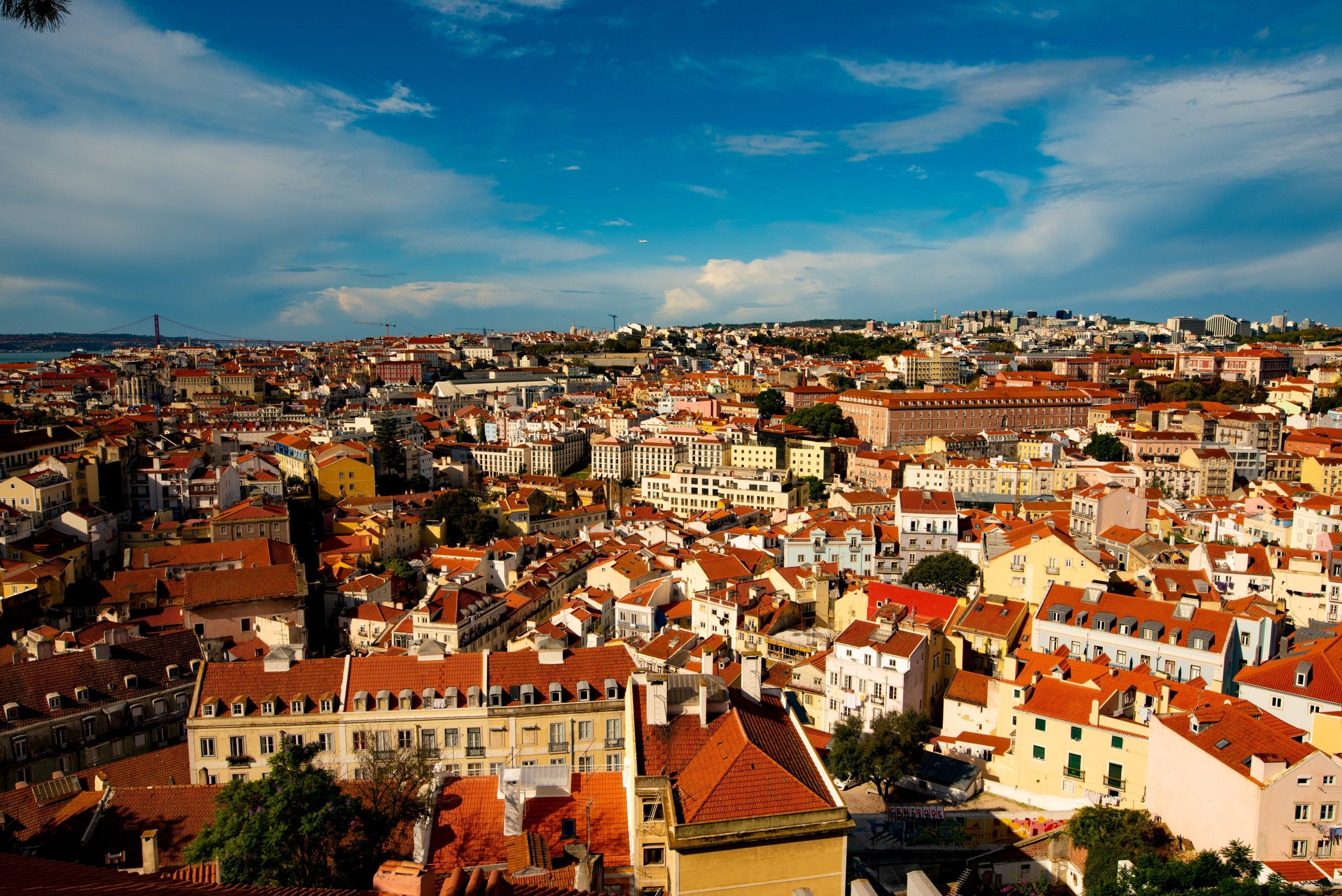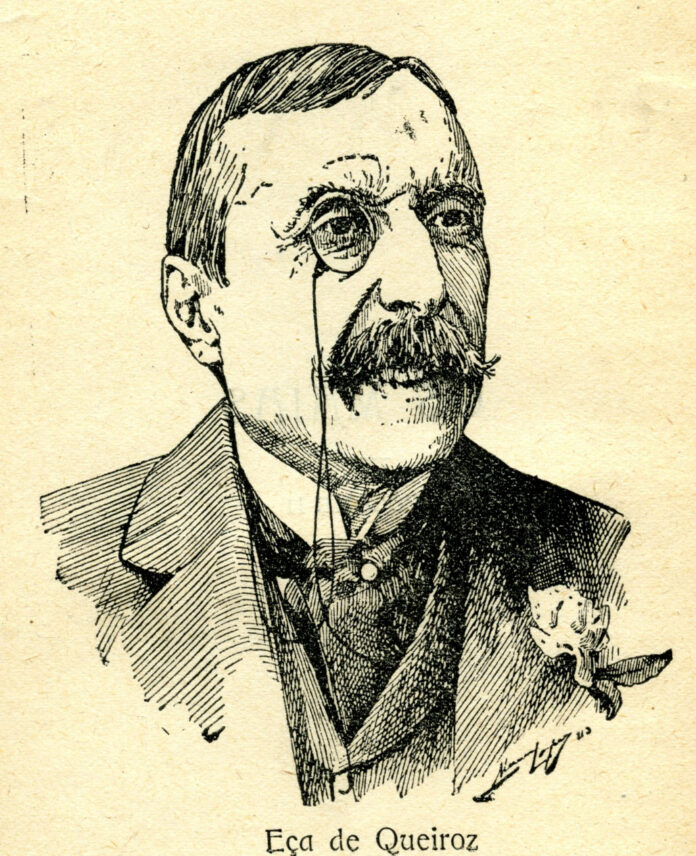When the topic of Portuguese literature pops up in a conversation, most people immediately think of Fernando Pessoa and Jose Saramago – which is only understandable, considering their worldwide recognition.
However, long before their birth, the literary landscape of Portugal was mostly dominated by Eça de Queirós, now considered one of the most influential Portuguese writers of all time.
So, who was Eça de Queirós, why is his work so important, why should any dedicated bibliophile read at least one of his books, and, lastly, which one to start with?
Eça de Queirós – Birth and Baptism
The history of Póvoa de Varzim, a city in the subregion of Grande Porto situated on the Atlantic coast, starts around 4000-6000 years ago. However, it is only in the last several hundred years that it has gained recognition for being a tranquil beach resort – one of the most popular in Northern Portugal, in fact.
Above this, Póvoa de Varzim earned its status as a cultural and historical center. Incidentally, it is also the birthplace of the writer who would change the course of Portuguese literature and become one of the most influential European writers of the 19th century – Eça de Queirós.
On the 25th of November 1845, in a house at number 1-3 of Largo de São Sebastião on Praça do Almada, José Maria de Eça de Queirós was born. His parents were Jose Maria Teixeira de Quieros, a delegate of the royal attorney, a judge, as well as a writer and poet, and Carolina Augusta Pereira d’Eça.
Because his parents weren’t married at the time of Eça de Queirós’ birth, his mother’s name was hidden from the birth certificate, and the baptism was handled by Francisco Augusto Pereira Soromenho, one of his mother’s relatives. Eça de Queirós ended up being baptized in Igreja de São João Batista, one of the most important landmarks in Vila do Conde, close to the city of Póvoa de Varzim.

Family Controversy
When Eça de Queirós was four years old, his parents finally got married. However, it is believed that his mother never acknowledged Eça de Queirós as her son.
Furthermore, the word goes that due to Eça de Queirós being born outside marriage and, in addition, that he exhibited incestuous tendencies toward one of his cousins, he never spent too much time with his parents. Instead, he was primarily raised by a nanny and spent much of his childhood in Aradas, Aveiro, in his grandmother’s case.
This tumultuous childhood, which would undoubtedly leave a deep mark on anyone’s personality, is thought to have greatly influenced Eça de Queirós’ later writings.
His books are by far about happy, balanced families. Instead, the author focuses on the most abnormal relationships possible, and, as you’ll probably notice if you decide to read anything signed by him, incest is a recurrent motif in his books, which stands as a symbol of abnormality.
Porto, Coimbra, and Lisbon
Until 1861, when he turned 16 years old, Eça de Queirós studied at Colégio da Lapa in Porto, now known as Seminário-Colégio da Irmandade da Lapa, one of the city’s first educational institutions.
He then left Porto for Coimbra, after having been admitted to the University of Coimbra at the faculty of Law. In short, like many other writers and artists who would end up shaping the history of their respective field, Eça de Queirós started navigating the adult world while pursuing a legal career. However, unlike some artists who found their calling while studying law and decided to discontinue their studies to pursue it, Eça de Queirós decided to graduate from the faculty of Law.
Shortly after, he moved to Lisbon, where he started practicing law, and at the same time, fulfilling his writing vocation by practicing journalism. Even before arriving in Lisbon, Eça de Queirós had written several pieces published in a local magazine, possibly inspired by his good friend Antero de Quental, another famous Portuguese writer and poet. In Lisbon, however, he had endless opportunities to grow.

Pursuing a Career in Diplomacy
A few years after moving to Lisbon, Eça de Queirós set on a 6-week journey to the Orient. The impressions from this trip were immortalized in his later works, including O Misterio da Estrada de Sintra, as well as A Reliquia.
Upon returning home, he moved to Leiria, having been appointed municipal administrator. During his stay there, Eça de Queirós embarked on a journey that would later culminate in his nomination as Portugal’s most notorious realist writer – the Charles Dickens or Gustave Flaubert of Portugal. It was in Leiria that he wrote one of his most widely recognized novels – O Crime do Padre Amaro.
However, Eça de Queirós did not remain in Leiria for too long, as he was quickly appointed Portugal’s consul in Havana. He stayed there for two years but did not miss the chance to visit Canada, the United States, and Central America. Subsequently, his diplomatic career took him to Newcastle, Bristol, and Paris.
Marriage and Death
When Eça de Queirós turned 40, he married Emília de Castro. Together, they had four children whom, unfortunately, the author didn’t see becoming adults, as he died in 1900.
Eça de Queirós was never a strong and healthy man. In 1900, he fell seriously ill, experiencing stomach pain, fever, diarrhea, lack of appetite, and neuralgia. Doctors suggested he probably had Crohn’s disease or tuberculosis, but no one knew for sure.
Eça de Queirós underwent several treatments which, unfortunately, seemed to be of no use. After having returned home from Switzerland, where he had gone to seek treatment, Eça de Queirós was in terrible shape, on the verge of death.
Three days later, on the 16th of August 1900, he was anointed – a religious practice often called extreme unction that implied anointing the sick person’s forehead and hands with oil alongside a liturgical prayer to alleviate their sufferings. Afterward, Eça de Queirós died peacefully in his home in Neuilly-sur-Seine.

Eça de Queirós – Literary Career
While studying at the Faculty of Law at the University of Coimbra, Eça de Queirós started writing pieces that were subsequently published in the Gazeta de Portugal magazine.
After moving to Lisbon, he pursued a career in journalism (alongside practicing law and eventually becoming a diplomat – how did he ever have time to eat?!), having eventually become the director of the O Distrito de Evora magazine.
The young author also collaborated with Renascença, an important magazine in Porto, A Imprensa, a magazine focused on science, literature, and arts, and Ribaltas e gambiarras.
The first book he wrote was O Mistério da Estrada de Sintra, which translates as The Mystery of the Sintra Road. It was based much on his notes from his 6-week journey to the Orient. The book is now considered the first Portuguese detective story.
A Relíquia – The Relic – followed (although it was published much later), which already showed Eça de Queirós’ preference for the realist literary movement.
While in Leiria, Eça de Queirós worked on his next major book that still stands as an influential title of European realist literature – O Crime do Padre Amaro, translated as The Crime of Father Amaro.
In between working hours, while building his diplomatic career, Eça de Queirós continued writing. He published O Primo Basilio (“Cousin Bazilio”), O Mandarim (“The Mandarin”), and Os Maias (“The Maias”) among others.
Literary historians believe that Eça de Queiros may have visited Emile Zola, a French writer, and father of naturalism. This probably occurred in Paris, after Eça de Queirós had been sent there for consular duties. The two authors may have had productive literary conversations, and Emile Zola may have played a part in Eça de Queirós’ undivided attention to literary realism.
Art critics claim that there are also traces of naturalism in Eça de Queirós’ The Maias, which may indicate why the author showed an interest in Emile Zola’s work.

Eça de Queirós’ Legacy
Many of the works signed by Eça de Queirós’ were published posthumously. His novels were translated into more than 20 languages, further proving his worldwide literary influence.
In addition, several books signed by him were chosen for movie adaptations:
- O Crime do Padre Amaro – first adapted in 2002 and directed by Carlos Carrera; in 2005, a Portuguese version directed by Carlos Coelho da Silva was released.
- O Primo Basilio – adapted on Brazilian television as a 35-episode TV series; in 2007 a movie (directed by Daniel Filho) based on the same book was released.
- Os Maias – adapted by Rede Globo as a 40-episode TV series; in 2014, it was adapted into a 1.5-million-euro movie by João Botelho.
- O Misterio da Estrada de Sintra – adapted into a movie produced in 2007
Besides these movie/TV series adaptations, many of Eça de Queirós’ novels were adapted for theater, particularly by Alice de Sousa, a London-based film and theater producer.
You’re probably wondering why we are even mentioning these, right?! Because we’re trying to convince you to read one of Eça de Queirós’ books and maybe even check out an adaptation – why not?!
It’s an excellent way to learn more about Portugal through the eyes of a local and explore the skillful way Eça de Queirós maneuvered various literary devices to shape political, economic, and social dilemmas.
The fact that his books are part of the realist movement is only an advantage for anyone looking for a book that will draw them into an authentic Portuguese setting!
Have we convinced you? (We certainly hope so!) Check out some details about Eça de Queirós’ pivotal books and pick one! (Spoiler alert – most of his books are quite dark and twisted!)
The Mystery of the Sintra Road
Pages: 219
We should probably start by saying that The Mystery of the Sintra Road, the first Portuguese detective story and Eça de Queirós’ first novel, was co-written with Ramalho Ortigão, another Portuguese writer.
The two met while Eça de Queirós was still a student in Porto. The writers often collaborated career-wise and remained close friends throughout their lives. The book was first published in 66 letters in the Diário de Notícias newspaper and subsequently edited to be published as a book.
The story focuses on two friends kidnapped by several masked men while returning to Sintra from Lisbon. They are taken to a house, where they discover a corpse. One of the two friends is a doctor, and the kidnappers ask him to confirm the cause of death. Another man enters the story who seems to know the answer to all questions. We’re up to an intricate unraveling of a twisted plot! What happens next? We’ll let you find that out!
The Crime of Father Amaro
Pages: 471
The Crime of Father Amaro: Scenes from the Religious Life, sometimes called The Sin of Father Amaro, was published in 1875 and (surprise-surprise!) ended up causing much controversy. Why so?
The answer’s quite clear – The Crime of Father Amaro is a story of a sexually frustrated priest who was forced into the priesthood. And no, we’re not just observing his thoughts and attempts to deal with this profound frustration. We’re also witnessing father Amaro falling in love with Amélia, who happens to be engaged to João Eduardo, an atheist and free-thinker.
Their engagement doesn’t last too long because Amélia is soon forced to break it off (incidentally, Father Amaro had a minor contribution to it). And so the controversial story unfolds, drawing the readers into “Eça’s relentless and unforgiving satire […] that employs every sort of comedy,” as Michael Dirda described it.
The three characters mentioned above are only a few among many that will stir your interest and “force” you to keep turning the pages, diving deeper and deeper into a story of religion, tolerance, equality, wisdom, and, ultimately, hypocrisy.
Cousin Bazilio
Pages: 439
Cousin Bazilio is another piece of social criticism depicted through a bouquet of typical characters.
Eça de Queirós introduces us to a bourgeois couple living in Lisbon in the 19th century – Jorge, a successful engineer, and Luiza, his highly romantic wife. Their friends are truly a remarkable combination of personalities whose lives are burdened by the most mundane troubles – gas crises, love affairs, adultery, anger, envy, and whatnot.
One day, Luiza faces issues in her own paradise – her husband must go to Alentejo, while she remains in Lisbon, bored and melancholic. That’s when the star of our story comes to visit her – Bazilio, a rich man whom Luiza quickly falls in love with (in fact, falls in love with him again, because they’d actually dated before!).
Bazilio couldn’t be more pleased, having nothing to object to “this love story [which] was pleasant and fascinating because it couldn’t be more complete! There was a little adultery, a little incest.” The tension only increases when Luisa is blackmailed, and Jorge returns home!
In Cousin Basilio, Eça de Queirós proves why he eventually earned his status as a classic writer – the intriguing tone and rhythm of the book, and the skillful use of characters to pinpoint deeper social issues are quite fascinating! Just wait until you get to the end! You’ll probably have lots of questions to ask Eça de Queirós!
The Maias
Pages: 506
The Maias: Episodes of Romantic Life is probably Eça de Queirós’ most widely recognized book, which, yet again (and unsurprising, considering that the author was a realist writer), focuses on providing readers with a broad social critique, as well as a political and moral dilemma.
The hero of the story, Carlos Maia, is a rich, handsome, and intelligent man who wants to make a change in Portugal. The narrator, however, takes us back in time, introducing us to other members of the aristocratic Maia family, with Alfonso da Maia (Carlos’ grandfather) as its head.
Since the book outlines various political and economic issues that marked turning points in the history of Portugal, The Maias is the choice if you want to learn more about the country. All these details are beautifully wrapped in romance, love affairs, and, surprisingly for both the readers and the characters, incest.
As with almost all realist books, which took no shame in depicting society as it was – with all the positives and negatives – The Maias was both praised and criticized. Some regarded it as a deeply humorous and ironic novel, while others condemned Eça de Queirós, stating that his book depicted Portuguese society in a monotonous, shortsighted, and unrealistic way.
The Illustrious House of Ramires
Pages: 352
Eça de Queirós’ last book, The Illustrious House of Ramires, was published posthumously. The story (set in the late 19th century) focuses on the heir of an aristocratic Portuguese family – Gonçalo Ramires.
On the one hand, he prides himself in his legacy, and, on the other hand, is a weak-willed and a dreamer who tries to live up to his ancestors’ heroism. Since Gonçalo is also an amateur historian, he decides to leave a mark on his family’s history by writing a book.
The readers are, of course, to join him in this deeply humorous yet interesting journey that shows Gonçalo trying to conceal his writing passion with his election as deputy in the Portuguese parliament. Quite a combination that culminates in an ending you’ll certainly enjoy!


